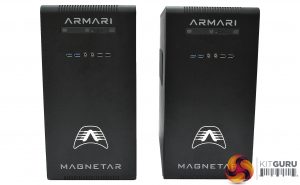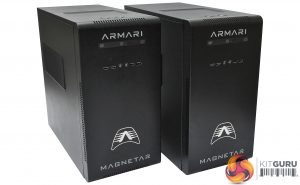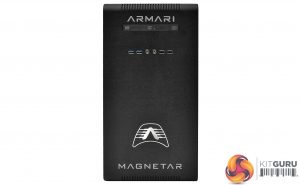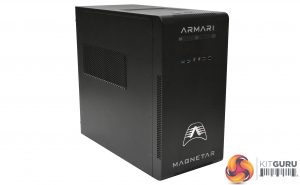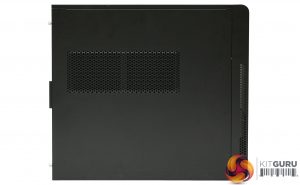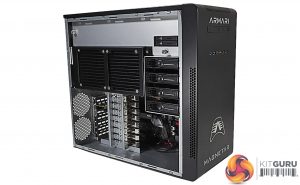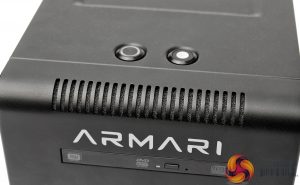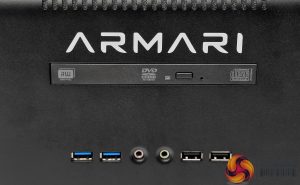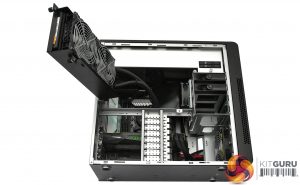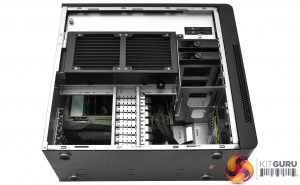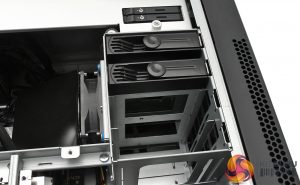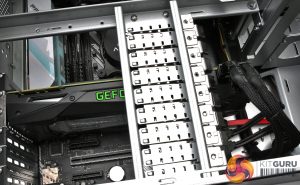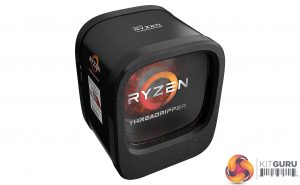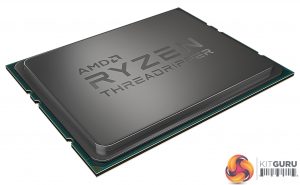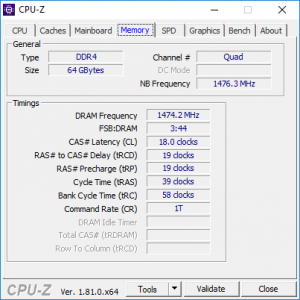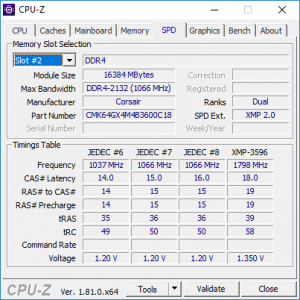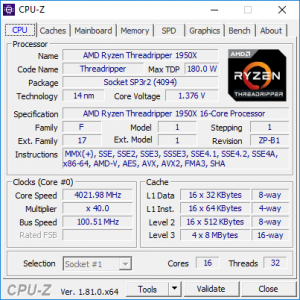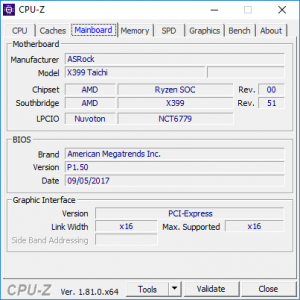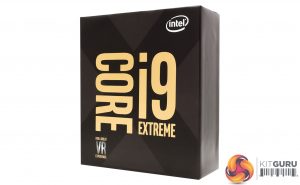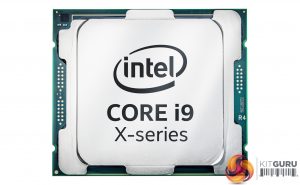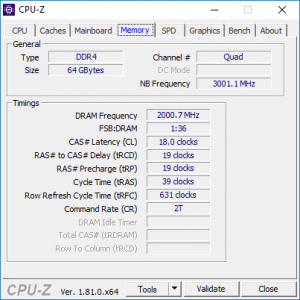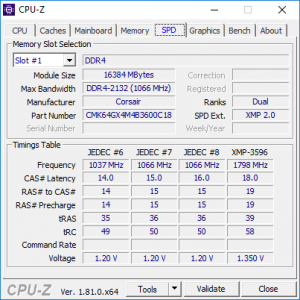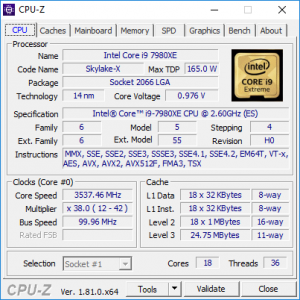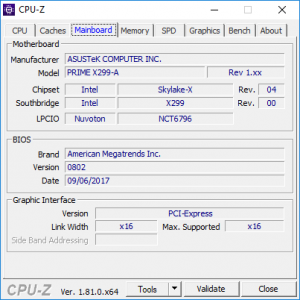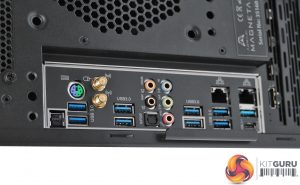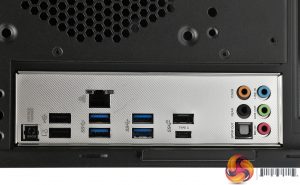Both Armari Magnetar systems come in the same S Series chassis.
This is a custom Armari design, especially aimed at the professional market. So it's decidedly sober in appearance.
There's a big vent on the side of the chassis, because that is where the radiator for the Armari water cooling sits. The power and reset buttons sit on the top near the front. There's space for a slimline optical drive, four USB ports and audio minijacks on the front, but not for any front-facing 5.25in bays.
The chassis is designed to have a large radiator for the water cooling on the side. This is Armari's custom SPX-A57LX system, and swings out to reveal the components underneath. There are four bays for 3.5in drives, and two for 2.5in drives.
All six bays can accommodate hot-swap caddies. There's a retainer bracket across the PCI Express slots to keep cards in place. This does make changing cards a bit of a rigmarole, but will also ensure that nothing gets dislodged in transit.
The AMD Ryzen Threadripper system is built around an ASRock X399 Taichi motherboard, using the X399 chipset. The processor is the top 1950X model, with 16 cores running at a nominal 3.4GHz. However, this has been permanently set to 4GHz across all cores, with voltage tweaked accordingly to 1.375V and the result tested for a lengthy period for stability.
We had no issues during our testing. AMD now offers a technology similar to Hyper-Threading, so the processor offers 32 virtual cores.
The memory total is 64GB, using four 3,200MHz 16GB DDR4 Corsair Vengeance LPX DIMMs. Although these can potentially run higher, the memory was clocked at 2,933MHz as this was completely stable throughout testing, whereas higher frequencies had one or two issues.
The Threadripper's memory controller is quad-channel, so the DIMM configuration takes full advantage of this but leaves room for upgrade to the 128GB maximum if desired at a later date.
The Intel Core i9 system is built around an ASUS PRIME X299-A motherboard, which uses the X299 chipset. The processor is the top i9 model, the 7980XE, which has a huge 18 cores and 36 threads. It has a nominal 2.6GHz frequency and 4.2GHz Turbo mode, but Armari has set all cores at 3.8GHz, with the option of a 4.5GHz Turbo mode on two cores. There are various modes in between, including 12 cores at 3.9GHz, 10 cores at 4GHz, 8 cores at 4.3GHz, and 6 cores at 4.4GHz.
It is possible to set the maximum Turbo frequency higher, but this proved to be the highest setting that would pass all reliability testing without issue. Armari aims to stay within the 300W thermal rating of its SPX-A57L water cooling system, so that the workstation will be rock solid even when under full load for hours (or days) on end. There is also an offset when running AVX2 and AVX-512 workloads, with the latter dropping all cores to 2.9GHz.
The same 64GB of 3,200MHz Corsair memory is used, again supplied as four 16GB DIMMs, to take advantage of the processor's quad-channel controller, but in this case it could run reliably at 3,600MHz in XMP mode. Again, there are four slots free for upgrade to the 128GB maximum.
The two systems have broadly similar port allocations, although the ASRock motherboard is slightly more generous in some areas. The X399 Taichi still includes a PS/2 port for legacy mouse or keyboard connections, and also has 802.11ac WiFi built in. There are two Gigabit LAN ports. There are eight USB 3.1 Gen 1 connections (formerly known as USB 3.0).
The ASUS PRIME X299-A board has no PS/2, only a single Gigabit Ethernet, and no WiFi. It also offers just four USB 3.1 Gen 1 ports, with the other two ports being USB 2.0.
Both systems offer six audio connections including optical S/PDIF, and both offer Type A and Type C USB 3.1 Gen 2 ports, which run at the full 10Gbits/sec.
Be sure to check out our sponsors store EKWB here
 KitGuru KitGuru.net – Tech News | Hardware News | Hardware Reviews | IOS | Mobile | Gaming | Graphics Cards
KitGuru KitGuru.net – Tech News | Hardware News | Hardware Reviews | IOS | Mobile | Gaming | Graphics Cards


